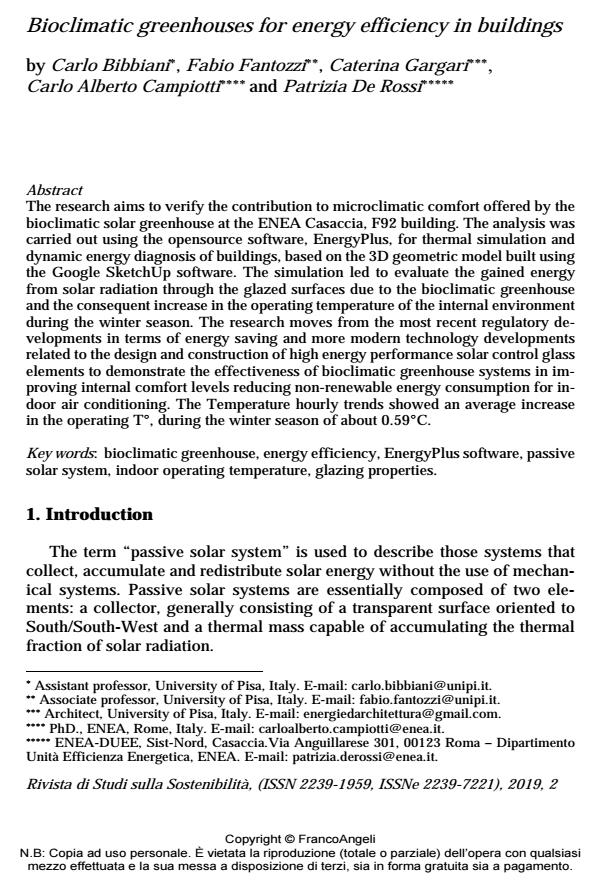Bioclimatic greenhouses for energy efficiency in buildings
Titolo Rivista RIVISTA DI STUDI SULLA SOSTENIBILITA'
Autori/Curatori Carlo Bibbiani, Fabio Fantozzi, Caterina Gargari, Carlo Alberto Campiotti, Patrizia De Rossi
Anno di pubblicazione 2020 Fascicolo 2019/2 Suppl.
Lingua Inglese Numero pagine 18 P. 213-230 Dimensione file 143 KB
DOI 10.3280/RISS2019-002-S1014
Il DOI è il codice a barre della proprietà intellettuale: per saperne di più
clicca qui
Qui sotto puoi vedere in anteprima la prima pagina di questo articolo.
Se questo articolo ti interessa, lo puoi acquistare (e scaricare in formato pdf) seguendo le facili indicazioni per acquistare il download credit. Acquista Download Credits per scaricare questo Articolo in formato PDF

FrancoAngeli è membro della Publishers International Linking Association, Inc (PILA)associazione indipendente e non profit per facilitare (attraverso i servizi tecnologici implementati da CrossRef.org) l’accesso degli studiosi ai contenuti digitali nelle pubblicazioni professionali e scientifiche
The research aims to verify the contribution to microclimatic comfort offered by the bioclimatic solar greenhouse at the ENEA Casaccia, F92 building. The analysis was carried out using the opensource software, EnergyPlus, for thermal simulation and dynamic energy diagnosis of buildings, based on the 3D geometric model built using the Google SketchUp software. The simulation led to evaluate the gained energy from solar radiation through the glazed surfaces due to the bioclimatic greenhouse and the consequent increase in the operating temperature of the internal environment during the winter season. The research moves from the most recent regulatory developments in terms of energy saving and more modern technology developments related to the design and construction of high energy performance solar control glass elements to demonstrate the effectiveness of bioclimatic greenhouse systems in improving internal comfort levels reducing non-renewable energy consumption for indoor air conditioning. The Temperature hourly trends showed an average increase in the operating T°, during the winter season of about 0.59°C.
Parole chiave:Bioclimatic greenhouse, energy efficiency, EnergyPlus software, passive solar system, indoor operating temperature, glazing properties.
- Solar greenhouses: Climates, glass selection, and plant well-being Domenico Mazzeo, Cristina Baglivo, Simone Panico, Paolo Maria Congedo, in Solar Energy /2021 pp.222
DOI: 10.1016/j.solener.2021.10.031 - 2024 IEEE International Conference on Environment and Electrical Engineering and 2024 IEEE Industrial and Commercial Power Systems Europe (EEEIC / I&CPS Europe) Arianna Latini, Carlo Alberto Campiotti, Carlo Bibbiani, Patrizia De Rossi, pp.01 (DOI:10.1109/EEEIC/ICPSEurope61470.2024.10751056)
Carlo Bibbiani, Fabio Fantozzi, Caterina Gargari, Carlo Alberto Campiotti, Patrizia De Rossi, Bioclimatic greenhouses for energy efficiency in buildings in "RIVISTA DI STUDI SULLA SOSTENIBILITA'" 2 Suppl./2019, pp 213-230, DOI: 10.3280/RISS2019-002-S1014